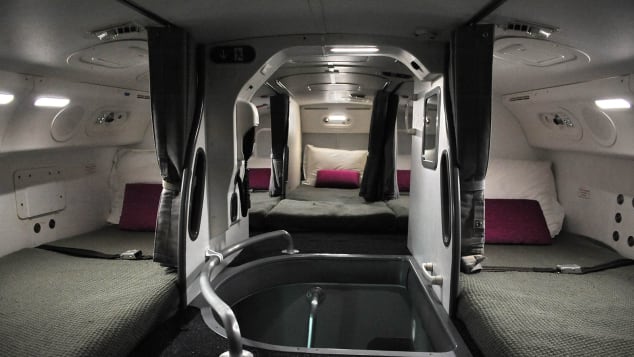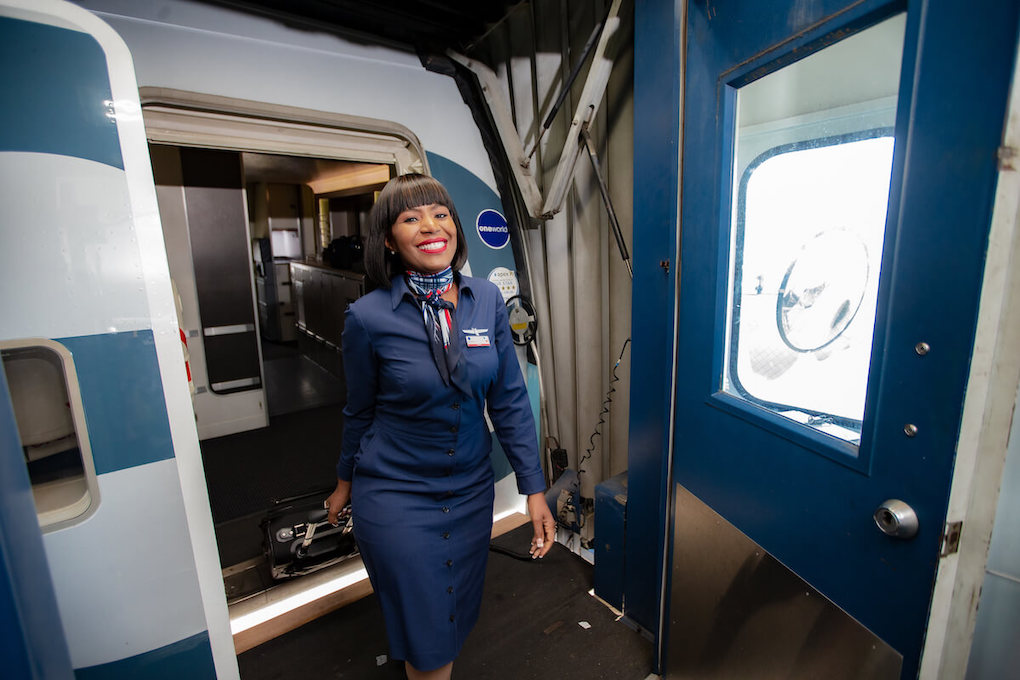Have you ever wondered where flight attendants and pilots go to rest on long flights? There are secret areas on widebody aircraft called Crew Rest Compartments.

Related: American Express And Delta Air Lines Unveil The First-Ever Credit Card Made From A Boeing 747
So why haven’t you noticed this before?
Crew Rest Compartments are hidden from public view and passengers are unable to access them. These compartments are located above the main cabin on Boeing 787s and Airbus A350s. On older aircraft, they’re often located in the cargo hold or main cabin.
Pilots’ compartments are generally located above the cockpit and have two bunks and a recliner seat. The cabin crew has six bunks, or more, located above the aft galley, which is the area in the rear of the aircraft where food and drinks are stored.
Compartment design
When purchasing an aircraft, airlines are able to choose the configuration of crew rest areas. The Federal Aviation Administration (FAA) set main parameters, such as being “in a location where intrusive noise, odors, and vibration have minimum effect on sleep.” The bunks must be temperature-controlled and crew members must be able to adjust the lighting.
Bunks have to be 78 by 30 inches and have at least 35 cubic feet of space around them. There must be a communal space for entering and exiting and changing of 65 cubic feet or greater.
Susannah Carr, an United Airlines flight attendant tells CNN Travel, “They have a padded mattress, an air vent to keep the air circulating and temperature controls so you can keep it cooler or warmer, and we’re provided with linens, usually similar to the ones used in business class on our international flights. I like them — but I’m also only about 5 foot 8 inches, so if you put a 6 foot 4 inch person in there, they might be a little tight.”
The compartments are comparable to a Japanese capsule hotel. There are no windows, but it’s a great space for sleeping and there are power outlets and a light. Safety equipment like seat belt lights, oxygen masks, and an intercom is mandatory.
Carr reveals that, “The bunks can be wider than first class and for me personally, depending on the aircraft, I get more legroom.”
Hidden from passengers
Most passengers walking by the compartments may think it’s just a closet. The compartments are meant to be hidden. When the door is opened, there’s a ladder to go upstairs. On older aircraft, the ladder would lead downstairs.
“The bunks are either open on the side or one end, so you can crawl in — I sometimes jokingly refer to them as ‘the catacombs,’” says Carr.
On Boeing 767s, rest areas are in the main cabin and are recliner seats surrounded by curtains.
Carr explains, “They are very heavy curtains, they block out light and a good amount of sound, but not if you’ve got an energetic crowd on the plane or an upset child. We’ve had passengers open the curtains, looking for something or thinking they’d be going into the galley, so it’s not necessarily the best rest.”
Rest is important
On long flights, cabin crews spend about 10% of their time in the rest compartments.
This time allows crew members to eat, drink and rest to recharge and show up as their best selves.
“Sometimes I can unwind and I can sleep, other times my body’s just not ready for a nap. But because we’re on a break, we’re allowed to use our phones, so we could watch a movie on it, or read a book,” says Carr.
Crew Rest Compartments are closed during taxi, takeoff and landing. There is a cabin manager who oversees the compartment. The manager gets a special bunk located near the entrance and they’re able to communicate with the rest of the cabin crew and the pilots.
“Everything in our industry is seniority based, from the schedule you fly to the routes you can hold, to your days off. The longer you’ve been there, the better the perks and one of those perks is picking your crew break time — we go on seniority order, so the person who’s the most senior on the flight gets to choose whether they prefer the first break or the second break, and then you go through the list until everyone has breaks,” explains Carr.
Passenger access to Crew Rest Compartments is not allowed.
Related: What No One Tells You About Being A Flight Attendant





